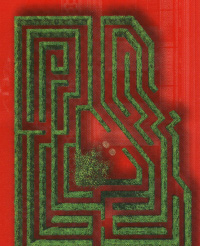Feynman, p. 16.
The division of the perceived universe into parts and wholes?
Bateson, Mind and Nature, p. 42.
There are powerful elements, forces, and factors unseen and understood as universal in our experience of nature's orderly arrangements, functions, and reactivity.
-
Elements: Ninety-eight naturally occurring atomic elements of the 118 on the periodic table.
-
Forces: Three or four fundamental movers of all fluctuations we are able to measure.
-
Factors: The inherited and acquired capacities of living creatures to actually reshape material conditions of existence immediately and for enduring periods of time.
Los Alamos National Laboratory
Two
Life arose despite powerful elemental forces that would otherwise extinguish living beings in the course of three billion years.
"The theory or evolution by natural selection was certainly the most important single scientific innovation in the nineteenth century. . . . the living world was different because it was seen to be a world in movement."
"Unlike physics, every generalization about biology is a slice in time; and it is evolution which is the real creator of originality and novelty in the universe."
Jacob Bronowski, The Ascent of Man, p. 234
Three
Quantum mechanics or the study of how light behaves reveals many ways that have tested earlier assumptions about the reality of material existence.
"The physics community reacted with intense skepticism to Planck's idea and its logical conclusion that light was not continuous but granular. The idea that light could be chopped into 'quanta' that act like a particle was considered preposterous."
Michio Kaku, Beyond Einstein, p. 38.
"At first, traditional physicists were skeptical of this new worldview. Indeed the founders of quantum mechanics expressed their concern, because it forced them to abandon the classical world of Newtonian physics."
Michio Kaku, Beyond Einstein, p. 47
"When the atom is disturbed, the motion of electrons around the nucleus becomes irregular, and the electrons emit light and other forms of radiation."
" . . . the most familiar form of the electromagnetic force is light."
Kaku, p. 7.
∞
Questions to consider answering from multiple texts.
These three verities above can be congealed into a unifying story of science. *
Contemporary scientific concepts
* congeal meaning • figurative • take shape or coalesce, especially to form a satisfying whole.

 Three
threads of thought lead through a labyrinth that is scientific knowledge; these themes are:
Three
threads of thought lead through a labyrinth that is scientific knowledge; these themes are:
